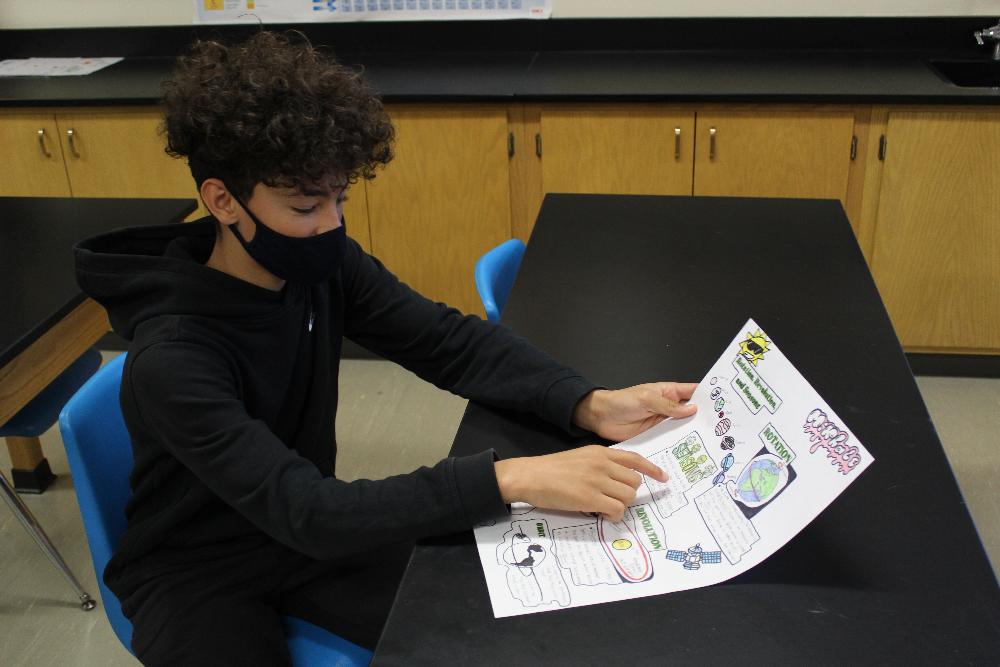Picture this: A more creative way to learn science
November 17, 2020
Mikhale Ford, an eighth-grader at Culler Middle School, used to draw all the time when he was younger. Recently, though, he’s become more involved in sports and has drifted away from his artwork.
But a recent science lesson reminded him how much he missed expressing himself through drawing. Students in Mary Herrington’s eighth-grade differentiated science class combined pictures and words to explain the earth, sun and moon system.
The lesson, called Art and Evidence, offers a creative outlet for students to show what they’ve learned.
“Written work is great but I want to give them opportunities to show what they know in lots of different ways,” Herrington said. “Mikhale does a very good job with the words but I thought his art was amazing.”
Ford believes he learns better through assignments such as this.
“Expressing myself in drawing helps me focus more and gives me a better understanding of stuff instead of just listening to people talk about it for an hour,” he said.
Science teachers from Culler and Schoo Middle School created the Art and Evidence assignment a couple years go after they were tasked with creating lessons that align with the voluntary national Next Generation Science Standards, which the state adopted and renamed Nebraska’s Career and College Ready Standards for Science. Part of those standards calls for fewer worksheets and more journals, reports, posters and media presentations that explain and argue.
“The beauty of the project Mary and colleagues have their students doing is that students get the opportunity to make their thinking visible in a way that makes sense to them,” said Lincoln Public Schools Interim Curriculum Specialist for Science Betsy Barent. “This also fits our vision for science education in the context of what we want to see less of and more of in science classrooms as students are figuring out how the natural world works.
“The other piece of this that matters so much is that by letting students show us what they know and can do in formats other than writing or verbally, we are providing more accessible and equitable opportunities for learning.”
Published: November 17, 2020, Updated: November 17, 2020

